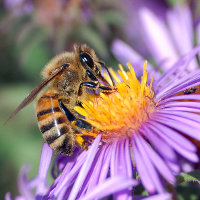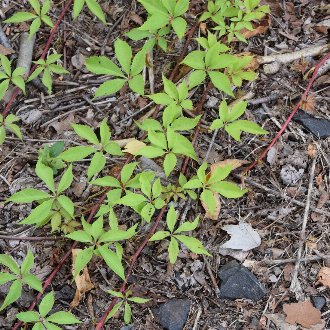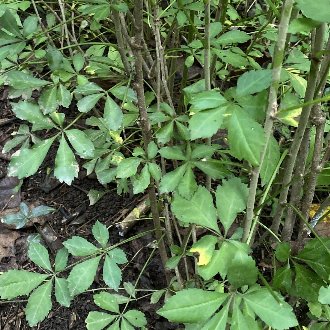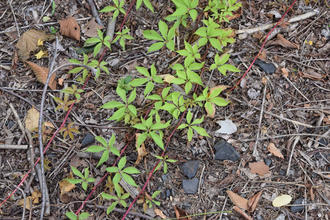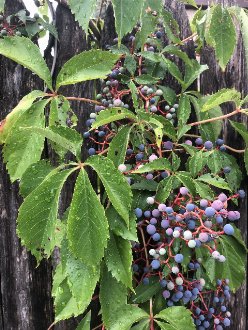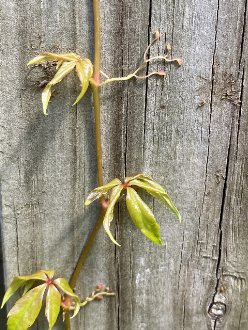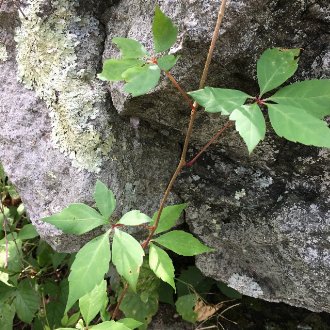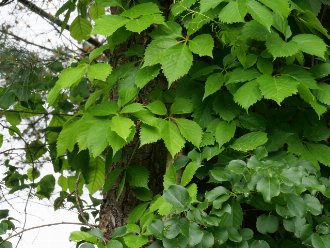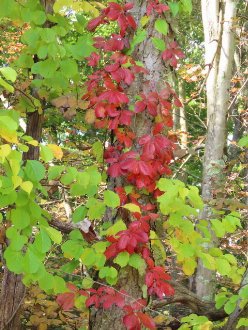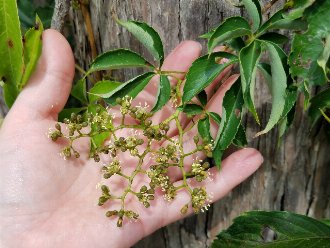Virginia Creeper (Parthenocissus quinquefolia (L.) Planch.)
↑Summary
A woody vine native to much of east and central North America, climbing via adhesive discs.
↑Range - Expand
| Legend | Color |
| Native | |
| Introduced | |
| Expanded | |
| Native or Not Present | |
| Introduced or Not Present | |
| Native or Introduced | |
| Native or Expanded |
This tentative map is based on our own research. It may have limited data on Canada and/or Mexico, and there is some subjectivity in our assignment of plants as introduced vs. expanded. Read more in this blog post.
Although this plant occurs somewhere in each of these regions, it may only occur in a small part of some or all of them.
This plant is occasionally used in landscaping, and frequently escapes. We marked new populations in the rocky mountains as introductions because of their slight geographic isolation, but they are close enough to this plant's native range that they could also be considered expanded. The northeastern population is expanded as it is contiguous with the native range.
↑Similar Plants
↑Links & External Resources
• Virginia Creeper | Fire Effects Information System (FEIS) (About This Site)
• Parthenocissus quinquefolia (Virginia Creeper) | Illinois Wildflowers (About This Site)
• Parthenocissus quinquefolia (Virginia Creeper) | USDA PLANTS Database (About This Site)
• Parthenocissus quinquefolia | Go Botany (About This Site)
• Parthenocissus quinquefolia (Virginia Creeper) | Missouri Botanical Garden Plant Finder (About This Site)
• Virginia Creeper | Virginia Tech Dendrology Factsheets (About This Site)
• Parthenocissus quinquefolia | Biota of North America Project (BONAP) (About This Site)
• Parthenocissus quinquefolia | NatureServe Explorer (About This Site)
• Parthenocissus quinquefolia | Flora of North America (About This Site)
• Parthenocissus quinquefolia | Missouri Plants (About This Site)
• Virginia Creeper | Maryland Biodiversity Project (About This Site)
• Parthenocissus quinquefolia (Virginia Creeper) | Minnesota Wildflowers (About This Site)
• Parthenocissus quinquefolia (L.) Planch. (Virginia-creeper) | Digital Atlas of the Virginia Flora (About This Site)

